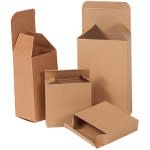 From cereal boxes to ready meals to pharmaceutical packaging, folding cartons are a key product in the global packaging market. This market, valued at $140,000 million in 2012, continues to grow and is forecast to be worth $184,000 million in 2018.
From cereal boxes to ready meals to pharmaceutical packaging, folding cartons are a key product in the global packaging market. This market, valued at $140,000 million in 2012, continues to grow and is forecast to be worth $184,000 million in 2018.This growth will be fed mainly by the continued and growing demand for health care products, as well as cigarettes, dry foods and frozen/chilled foods, especially in emerging economies, while demand in the developed regions is likely to be somewhat muted in comparison.
Below Smithers Pira highlights five key trends which are affecting the market for folding cartons.
Migration barriers
The migration of contaminants through cartonboard used in food packaging has been a cause for concern since 2010, with the identification of mineral oils from recycled newsprint as a potential threat to consumer health.In June 2012, the Food Standards Agency (FSA) announced the development of a scanner that is capable of detecting the unintentional transfer of chemicals, including substances used in printing inks, from the outer surface of food packaging to the inner surface in contact with the food.
As a result there has been a surge to develop a barrier that can prevent the migration of both known and unknown substances, which could prove harmful to consumers.
Downsizing
Driven by the need to reduce costs, as well as the desire to attract positive publicity, brand owners are constantly striving to reduce the amount of packaging used in the distribution of their products.Initiatives such as the Kraft Foods "Better World" sustainability programme, which aims to make packaging "less and better", have seen a reduction in overall packaging consumption volumes, with Kraft achieving a saving of 10% on the packaging volume of its Easter egg packaging.
Single serve packs
The trend towards smaller packs to reduce packaging volumes is offset by a simultaneous move towards single serve packs in many end-use sectors. This trend tends to result in overall packaging volumes increasing as smaller packs consume more material in their packaging than the larger packs they replace, per volume of packed product.The demand for single serve packs is being driven by the growing number of single person households, alongside increasing demands on consumers’ time resulting in families eating at varying times of the day. These trends resulted in more than half of the new product releases in the UK prepared food sector being in single serve packs in 2012.
Printing techniques
Brand owners are becoming increasingly demanding of converters and printers in efforts to differentiate their products in an ever more crowded marketplace. This is stimulating innovation in packaging design and printing techniques, with an increasing requirement for additions to packaging such as QR codes, holographic images, Fresnel lenses and other 3D devices.An exciting innovation that brand owners are starting to incorporate into their packaging is the use of digital printing. This is driven by a growing demand from brand owners for seasonal and promotional packaging designs that can be achieved via digital print. Up until recently the applications of digital print in the market for folding cartons has been limited, but developments in the last few years have made it a viable and promising option.
Smart Packaging
Developments in printed electronics are bringing the development of smart packaging closer to economical implementation by reducing the previously prohibitive costs associated with this technology.Driven by ageing populations needing more sophisticated packaging in applications such as medicine monitoring, coupled with rising disposable incomes and stricter legislation and control, demand for smart packaging is growing. As this innovative area continues to grow, it will have an unavoidable influence on the packaging market.
More details can be found in the Smithers Pira’s report The Future of Folding Cartons to 2018.


